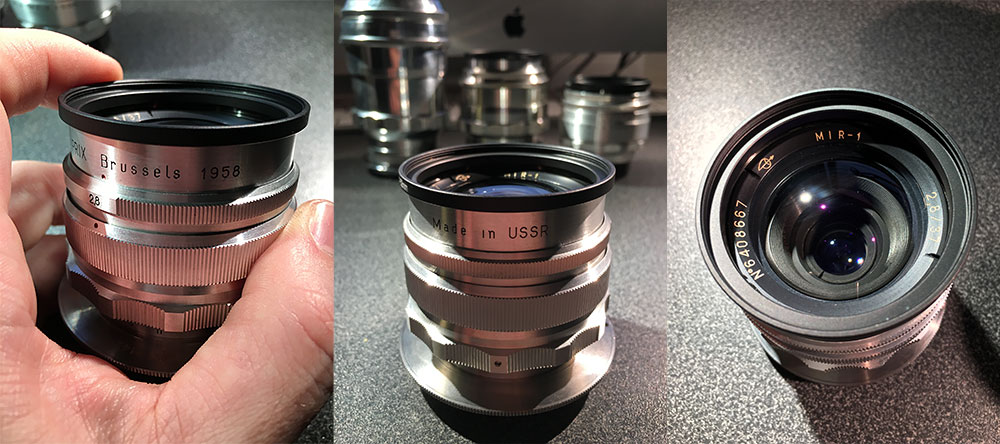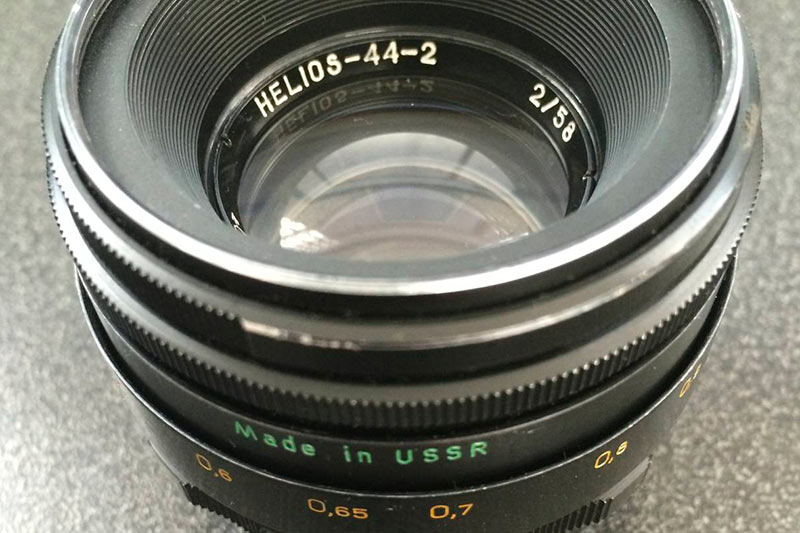
Prototype Industar-22 3.5/50mm
This unusual little Industar-22 has certainly become an intriguing purchase. Located in Russia, I found this tiny lens on eBay for about £50 and it was described as a possible Zenit prototype. I don’t think that’s far off. I recently picked up a copy of “The Authentic Guide to Russian and Soviet Cameras” by Jean Loup Princelle. This is one of the authoritative reference books on Russian cameras and lenses which went out of print in 2004. The book itself is getting hard to find and I paid more for it than this lens. It’s a fascinating read tying in Russian history to the development of its camera systems. Thanks to the book I was able to identify this specific lens.

The Industar-22 was the standard lens for the “Zorki” rangefinder camera system. The Zorki was an exact copy of the Leica II rangefinder of the 1930s and the lens was a Zeiss Tessar copy in a sort of Leica Elmar body. The Zorki proved that KMZ (Krasnogorsk Mechanical Factory) was capable of producing world class optical equipment and it was followed up in 1953 by one of the world’s first production SLRs, the Zenit, which was years ahead of the West (or East). Work on the Zenit began in 1950-51 and according to Princelle, just 6 prototype cameras were produced during that initial period. The lens used for these prototypes was a factory modified Industar-22. The lens had to be shortened to allow for the increased distance caused by the Zenit’s SLR mirror. By the time the Zenit went into production, a specifically redesigned Industar-22 would be produced.
Interestingly, this particular Industar-22 bears the KOMZ factory logo which was a satellite factory of KMZ located on the banks of the Volga River. The serial number confirms that it was produced in 1950 and it’s based on a Industar-22 model K350 sporting that year’s redesigned focus knob. Originating from the KOMZ factory alone makes this an unusually rare find never mind the fact that it has been adapted for the Zenit SLR. The eBay seller based his assessment on Princelle’s photo of an original prototype Zenit which shows a lens of KMZ origin but this lens clearly originated from the KOMZ factory.
I believe this actually was a prototype for the first Zenits but why it originated from KOMZ (a factory better known for its military equipment) I’ll probably never know. It would seem unlikely that this lens was modified after the final Zenit release. The Industar-22 and its follow-up the Industar-50 were two of the longest production run lenses in Soviet history. They were the modern day equivalent of a cheap ’nifty-fifty’ and the effort required to modify it would outweigh any advantage over a standard SLR version. In any case, it’s going to be the absolute oldest vintage Soviet lens that can be mounted somewhat natively on a Canon body and for that distinction, it makes a fine addition to my M39 collection.

Left: Infinity lock Centre: 1950 serial number Right: KOMZ factory logo
Handling I must say is a bit bizarre and it looks a little crazy on a 5D mark III. I ended up mounting it using an M39-EOS adapter I had laying around – no Optix chip on this one as there really isn’t much point. The Industar-22 has what appears to be an infinity focus lock which is accessible by depressing the focus knob. It’s a strange vintage rangefinder feature which unfortunately gets blocked by the EOS adapter. It means focus is limited to a max range of about 5m and the Industar-22’s optical design can’t go less than 1m – that’s a pretty narrow useable range! I suppose the adapter could be milled out slightly to accommodate the mechanism but I seriously doubt infinity would be possible anyway based on my experience with other M39 SLR lenses and who’s to say the prototype even adhered to the eventual standard.
Many of the photos below were obtained by adding a Leica ‘Elpik’ close-up lens to the front of the Industar-22. I frequently add a Canon 500 D Diopter to these vintage lenses to compensate for their long minimum focus distance but even my smallest 52mm diopter dwarfs this lens. I found this ‘Elpik’ on eBay for £12 and while not a perfect fit, allows this lens to get much closer to the subject than it otherwise could. I started testing this lens in London and brought it to the Philippines so the images below reflect an odd mix.
With age comes primitive ergonomics, narrow focus range, soft edges, relatively slow aperture of ƒ3.5, heavy vignetting and low contrast – all adding up to an abundance of character and charm! Despite the deficiencies, it will often surprise you with a strikingly sharp image. I actually had a bit of fun chasing swans around the pond trying to creep up on them within the limited focus range. It’s got a weird linear spectral flare which I find more pleasing than the Jupiter-11. For such a slow aperture, it has an appealing, if not eerie out of focus bokeh and produces an unmistakeable vintage look. There’s a significant amount of swirly bokeh which up to this point I had assumed was the side effect of a large aperture – not the case here. Having spent some time shooting, it remains an intriguing lens and in my final assessment, an excellent find.

The Legendary Helios-40 1.5/85mm

Telemar-22 5.6/200mm
You May Also Like

Mir-1 2.8/37mm
February 24, 2016
Telemar-22 5.6/200mm
September 4, 2016
